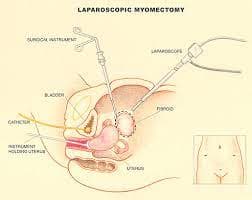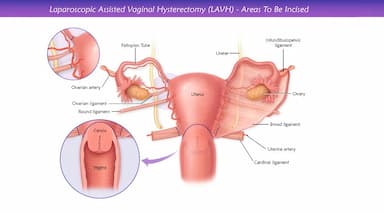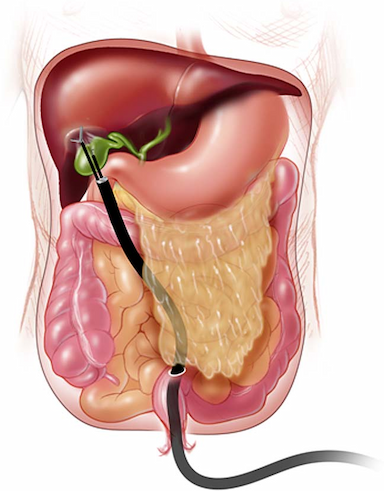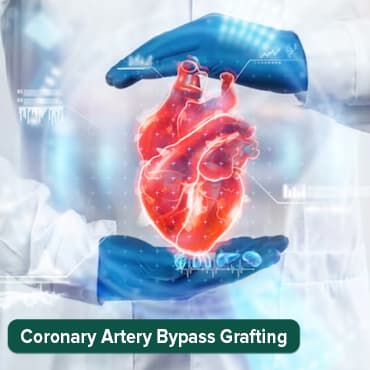
Skull Base Surgery Explained: Procedures and Innovations
09 Oct, 2023
 Healthtrip Team
Healthtrip TeamSkull base surgery is a specialized domain in medicine, focusing on intricate procedures involving the foundation of the skull. Its primary objective is to address anomalies, tumors, and injuries within the skull base region. This nuanced field combines precision and innovation, offering tailored solutions to restore health and function to this critical anatomical area. As we explore the landscape of skull base surgery, it becomes evident that its significance lies in the delicate interplay between advanced surgical techniques and a deep understanding of the complexities inherent to this vital part of human anatomy.
Transform Your Beauty, Boost Your Confidence
Find the right cosmetic procedure for your needs.

We specialize in a wide range of cosmetic procedures

Purpose and Indications:
A. Why it is Done:
- People undergo skull base surgery to treat tumors, whether they are benign or malignant growths affecting the skull base.
- It is employed to correct anatomical abnormalities within the skull base.
- Skull base surgery is essential for managing injuries sustained to the skull base due to trauma.
B. Who Needs It:
- Individuals diagnosed with tumors impacting the skull base necessitate this surgery for effective treatment.
- Those born with congenital abnormalities in the skull base may require surgical intervention.
- Patients who have suffered traumatic injuries affecting the skull base fall within the scope of individuals who may need this surgery.
Skull base surgery procedure
Before the surgery
Before the surgery, you'll go through a series of steps to make sure everything is set for a successful procedure.
A. Patient Evaluation:
- You'll get some detailed imaging done – usually MRI or CT scans. It helps your medical team get a clear picture of what's going on in your skull base.
- They'll dive into your medical history and give you a once-over to understand your overall health.
B. Psychological Preparation:
Most popular procedures in
Laparoscopic Cystect
Upto 80% off
90% Rated
Satisfactory

Laparoscopic Myomect
Upto 80% off
90% Rated
Satisfactory

LAVH
Upto 80% off
90% Rated
Satisfactory

NOTE
Upto 80% off
90% Rated
Satisfactory

CABG
Upto 80% off
90% Rated
Satisfactory

- Brace yourself for a chat. You'll have some counseling and education sessions. They'll talk you through the whole process, answering any questions or worries you might have.
- It's a chance to air out concerns. They want you to go into this with a clear mind and heart.
During Phase:
Now, let's talk about what happens during the actual surgery.
A. Anesthesia:
- Time to choose your anesthesia. Depending on your case, you might go fully under or just get a part of you numbed.
- They keep a close eye on you throughout the surgery, monitoring everything to ensure you're doing well.
B. Surgical Techniques:
- High-tech stuff comes into play. Surgeons use advanced imaging and navigation tools to be super precise.
- If you're having a tumor dealt with or an abnormality fixed, they'll go in with minimal disruption – less cutting, quicker healing.
- Minimally Invasive Approaches:
- Think of this as surgery with less impact. It means less scarring and a potentially faster recovery.
After Care:
Once the surgery is done, it's time to recover.
A. Recovery Room:
- You'll be in a recovery room where they keep a close eye on your vital signs – just to make sure everything is going smoothly.
- They won't let you suffer – pain management is a priority.
B. Hospital Stay:
- Expect some post-op care. They'll take care of your wounds to prevent any infections.
- Depending on the procedure, you might do some exercises to get back on your feet.
C. Follow-up Appointments:
- After some rest, you'll have follow-up appointments. More scans might be in the cards to check how things are going inside your skull base.
- Long-term care involves regular check-ups to make sure everything stays on track. They're keeping an eye out for any signs of trouble.
Latest Advancements in Skull Base Surgery:
A. Robotics-assisted Surgery:
- Imagine precision at a whole new level. Robotics-assisted surgery is now playing a big role in skull base procedures.
How it Works:
- Surgeons use robotic systems to control surgical instruments with incredible precision.
- This allows for smaller incisions and more intricate movements.
Benefits:
- Reduced trauma for patients.
- Faster recovery times.
- Enhanced surgeon control, especially in hard-to-reach areas of the skull base.
Current State:
- The technology is continually evolving, making skull base surgeries more efficient and less invasive.
B. 3D Printing Applications:
A surgeon holding a 3D model of your skull base before even stepping into the operating room.
How it Works:
- Using imaging data, 3D printing creates a tangible replica of the patient's skull base.
- Surgeons can use this model for detailed planning and simulations before the actual surgery.
Benefits:
- Personalized surgical planning.
- Improved understanding of complex anatomies.
- Reduced risks during surgery.
Current State:
- 3D printing is increasingly becoming a standard tool in preoperative preparations.
C. Neuro-navigation Systems:
- It's like GPS for brain surgery. Neuro-navigation systems provide real-time guidance during skull base procedures.
How it Works:
- Specialized software integrates preoperative imaging with the surgeon's field of view during surgery.
- This helps in precise navigation through intricate structures of the skull base.
Benefits:
- Surgeons get a virtual roadmap, enhancing accuracy.
- Minimizes damage to surrounding healthy tissues.
- Improved safety, especially in delicate areas.
Current State:
Continual advancements in software and hardware are making neuro-navigation systems more intuitive and effective.
Tips for Self-Preparation:
- Join support groups for shared experiences and emotional support.
- Understand the procedure through thorough discussions with your medical team.
- Engage in preoperative exercises to enhance physical resilience.
- Adopt a healthy lifestyle with focus on nutrition and exercise.
Risks and Complications:
A. Infection:
- Postoperative infections can occur at the surgical site.
- Increased risk due to the invasion of tissues during surgery.
B. Bleeding:
- Surgical procedures in the skull base can lead to bleeding.
- Hemorrhage might occur during or after surgery.
C. Nerve Damage:
- Manipulation of structures near nerves can lead to temporary or permanent damage.
- Potential for sensory or motor deficits.
D. Cerebrospinal Fluid Leaks:
- Surgical intervention may inadvertently cause leaks in the protective fluid surrounding the brain.
- Raises the risk of infection and can lead to complications if not promptly addressed.
Strategies to Prevent Complications:
A. Antibiotic Prophylaxis:
- Administration of antibiotics before surgery to prevent postoperative infections.
- Reduces the risk of bacterial contamination during the procedure.
B. Careful Dissection Techniques:
- Precise and careful surgical techniques minimize the risk of bleeding and nerve damage.
- Surgeons use advanced tools and technologies to enhance precision.
C. Regular Follow-up for Early Detection of Complications:
- Scheduled follow-up appointments to monitor for any signs of infection, bleeding, or nerve issues.
- Early detection allows for prompt intervention and management of complications.
Outlook and Prognosis:
A. Success Rates:
- Tumor Recurrence Rates:
- Regular follow-ups are essential to monitor for any signs of tumor recurrence.
- Advances in surgical techniques contribute to reducing recurrence rates.
- Functional Outcomes:
- Improved surgical precision enhances functional outcomes.
- Individual variations exist, but many experience improved functionality.
B. Rehabilitation and Quality of Life:
- Cognitive and Physical Functions:
- Rehabilitation programs aim to restore and enhance cognitive and physical functions.
- Varied outcomes based on the nature of the skull base condition and individual responses.
- Emotional Well-being:
- Emotional support and counseling play a crucial role in the overall well-being of patients.
- The journey post-skull base surgery involves adapting to changes, and psychological support contributes to better emotional health.
Skull base surgery, at the nexus of precision and innovation, offers transformative solutions for diverse conditions. From meticulous preoperative preparations to cutting-edge techniques and postoperative care, it signifies a holistic approach. Advancements like robotics and 3D printing contribute to its evolving landscape, promising improved functionality and enhanced quality of life.
Wellness Treatment
Give yourself the time to relax
Lowest Prices Guaranteed!

Lowest Prices Guaranteed!



